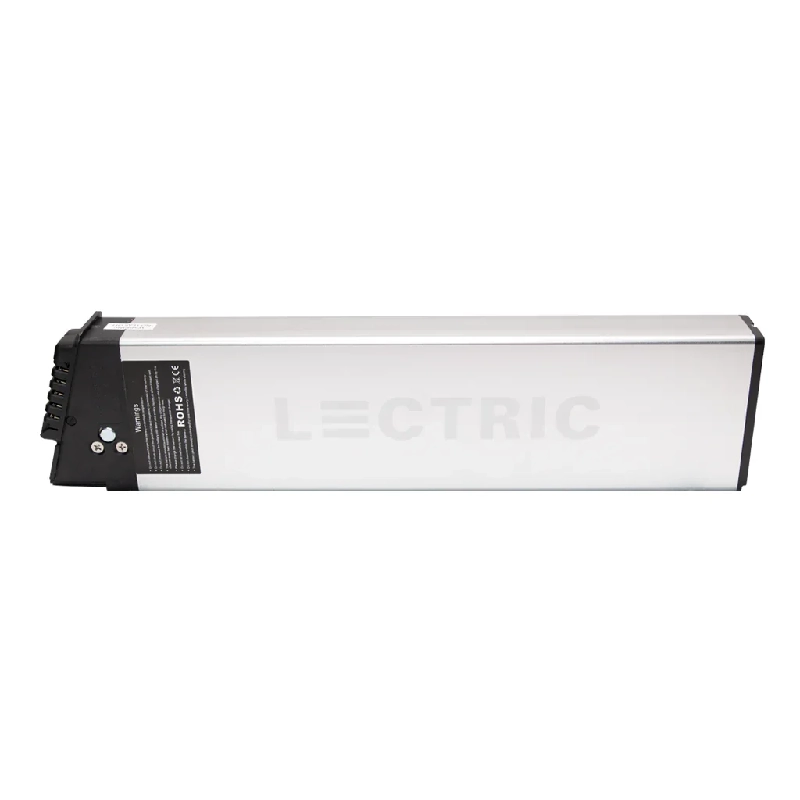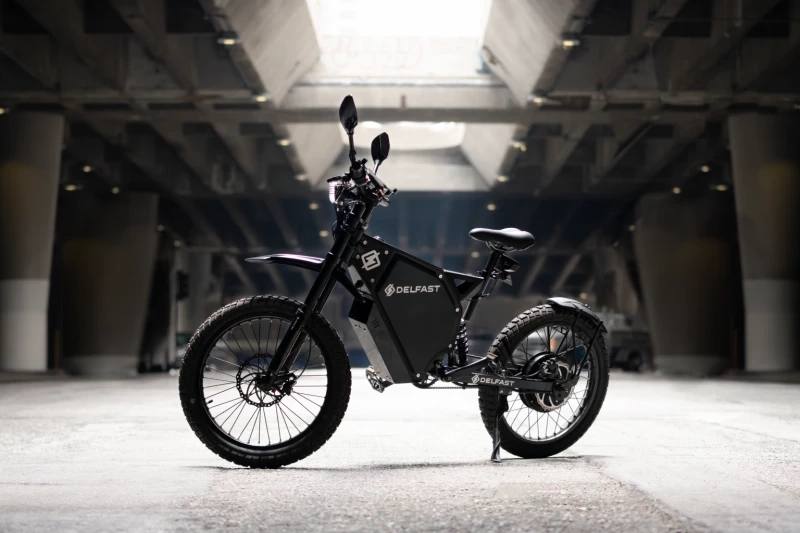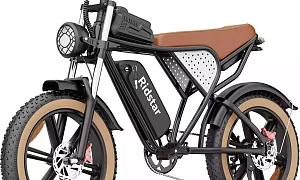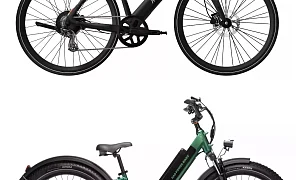If there’s one thing every serious e-bike rider craves, it’s range. Whether you're commuting across town, tackling long scenic routes, or just want peace of mind on the trails, how far your battery takes you makes a huge difference.
In this guide, we’ll break down the key factors that determine real-world battery performance—like watt-hours, voltage, and battery chemistry—plus highlight some of the best long-range e-bikes available today. You’ll also get simple, practical tips to make your battery last longer and perform better.
Let’s clear up the confusion around range numbers and help you ride farther, smarter, and with confidence.
What Really Impacts E-Bike Battery Range
Battery Capacity: Watt-Hours (Wh) Matter Most
Think of watt-hours (Wh) as your battery’s fuel tank. The higher the number, the longer your ride—in theory.
- A 500Wh battery typically gives 25–45 miles, depending on terrain and assist level.
- A 750Wh battery can go 45–70 miles, great for longer commutes or hilly rides.
- A 1000Wh battery? You're looking at up to 100+ miles with conservative riding.
Pro Tip: To estimate real range, divide Wh by 20 for throttle-heavy rides or by 15 for moderate pedal assist.
Voltage and Motor Efficiency
Voltage is like horsepower—it impacts how hard your motor can push.
- 36V systems are common in casual commuter e-bikes.
- 48V gives a stronger boost, especially uphill or with cargo.
- 52V is found in high-performance and off-road models.
A high-voltage battery paired with an efficient motor can extend range by reducing the strain on each ride.
Battery Chemistry: It’s Not All the Same
Most e-bikes today use lithium-ion batteries, which offer solid performance, but there are variations:
- Li-ion (Lithium-ion): Lightweight, high capacity, decent lifespan.
- LiFePO4 (Lithium iron phosphate): More stable and longer-lasting, but heavier.
- NiMH and lead-acid: Outdated and rarely used in quality e-bikes.
Look for cells from trusted names like Samsung, LG, or Panasonic for reliability.
Other Things That Affect Your Range
Even with a top-tier battery, range depends on how and where you ride. Here’s what can shrink (or boost) your mileage:
- Rider weight and cargo load
- Tire pressure and tread
- Assist level (eco vs turbo)
- Headwinds and hills
- Start-stop city riding vs steady cruising
Pro Tip: Keep your tires inflated and ride in lower assist modes to maximize range without sacrificing comfort.
Top Long-Range E-Bikes Worth Checking Out

Delfast Top 3.0 – Up to 200 Miles
An industry leader for extreme distance. Equipped with a 3000Wh battery and 72V system, it’s practically a motorcycle with pedals.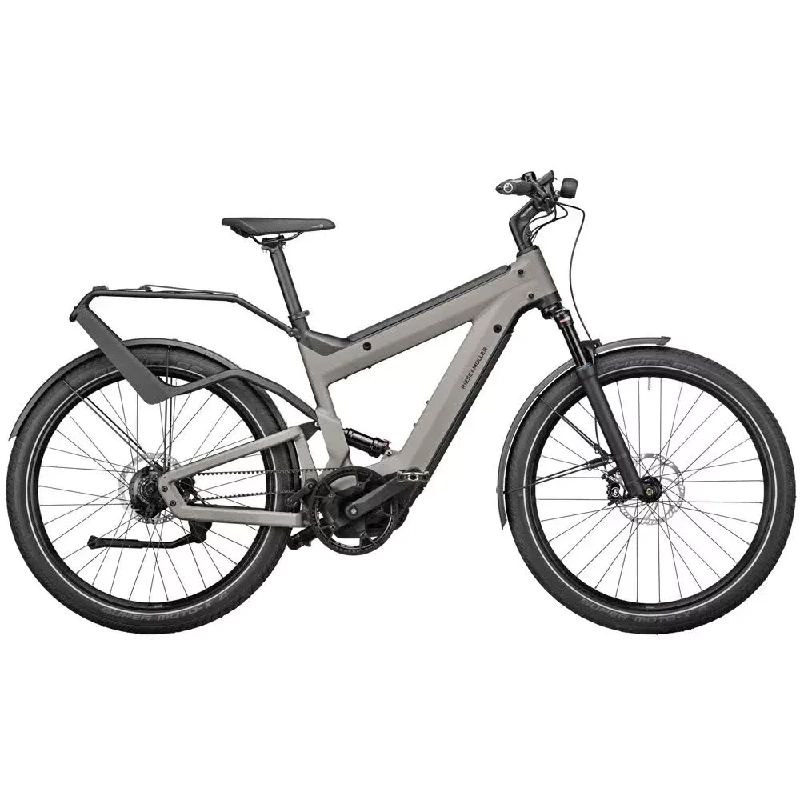
Riese & Müller Superdelite GT – Dual Battery System
Dual 625Wh Bosch PowerTube batteries offer up to 100 miles. Ideal for riders who want premium tech and full-suspension comfort.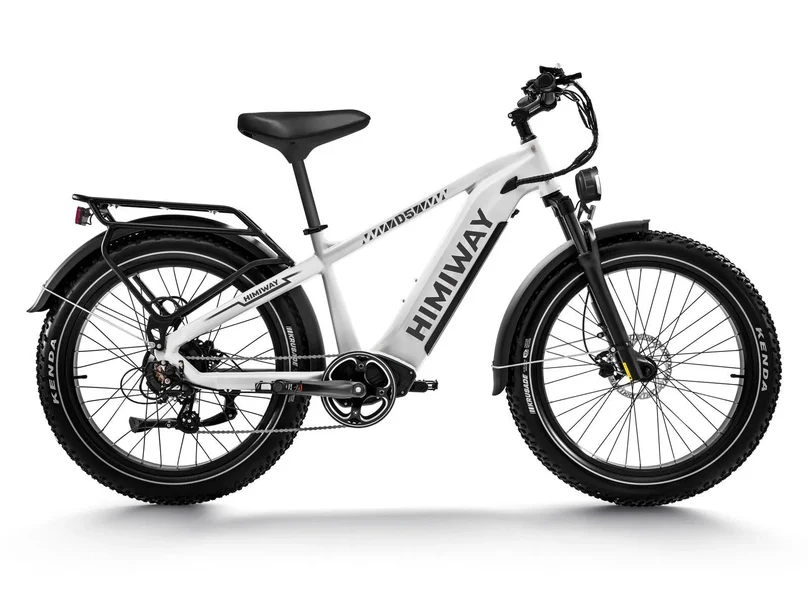
Himiway Zebra – Budget-Friendly Long Range
With a 960Wh battery and fat tires, this model can hit up to 80 miles per charge—at a surprisingly affordable price point.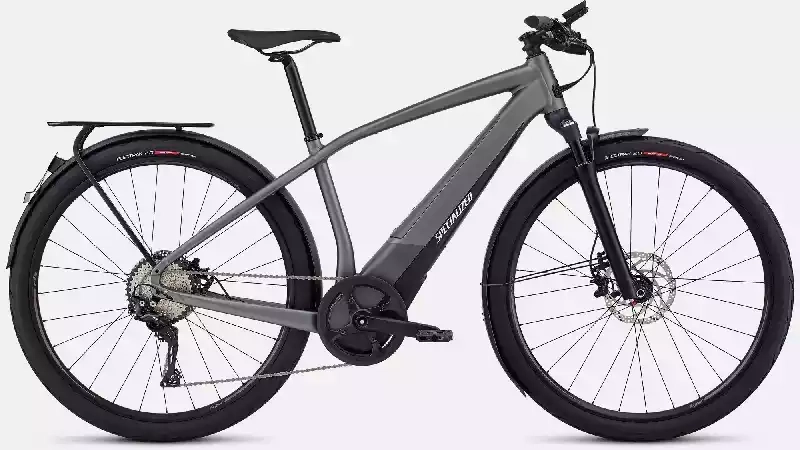
Specialized Turbo Vado 5.0 – Premium Commuter
A sleek 710Wh battery paired with smart range management gives 70–90 miles of urban and suburban freedom.
Dual Battery Systems: Are They Worth It?
Some high-end bikes now come with dual battery setups, letting you double your range without swapping packs mid-ride.
Benefits:
- Ride farther without range anxiety
- Balanced weight distribution on premium frames
- Less frequent charging
Consider this if you tour, ride hilly terrain, or just love long rides with zero interruptions.
Can You Upgrade Your Battery?
Yes—but do it carefully. Many e-bike brands sell aftermarket or extended-range batteries, but compatibility is key.
Look for:
- Matching voltage and connector type
- Same brand or approved third-party seller
- Whether the controller and motor can handle more juice
Skipping these steps could void your warranty or even damage your bike.
Battery Care Tips to Extend Lifespan
A long-range battery isn’t just about size—it’s about how you treat it.
Charging Do’s and Don’ts
- Don’t charge to 100% daily—stop at 80–90% when possible.
- Avoid full discharges—try not to drop below 10%.
- Use the original charger to prevent overheating or short-circuiting.
Storage and Handling
- Store at 40–70% charge if not riding for a few weeks.
- Keep in a cool, dry place—extreme heat kills battery cells.
- Never leave it in a hot car or freezing garage.
Basic Maintenance
- Clean contacts gently with a dry cloth
- Inspect regularly for swelling or damage
- Don’t hose it down—use a damp rag and be careful near ports
What to Look for in a Long-Range Battery Setup
When choosing your next e-bike or upgrade, keep these points in mind:
- Minimum 600Wh for moderate-range needs, 750Wh+ for long rides
- Look for trusted cells (Samsung, LG, Panasonic)
- Prefer removable batteries for easy charging
- Consider total weight—bigger battery = heavier ride
- Check the warranty—some batteries come with 1–2 year guarantees
Battery range can make or break your e-bike experience. The good news? With the right knowledge, setup, and care, you can ride farther and worry less.
Whether you’re shopping for a powerful commuter, an all-day adventurer, or just want to get the most out of your current setup—battery matters most.
Ready to ride longer? Start by checking your current battery’s specs or exploring long-range e-bikes that fit your style and budget.
What Determines E-Bike Battery Range?
Not all e-bike batteries are created equal—and just looking at the advertised “miles per charge” won’t give you the full picture. Real-world range depends on several technical factors, from battery size to motor voltage, plus how you actually ride.
Let’s break it all down in plain English so you can confidently choose the best long-range e-bike or upgrade your current setup.
Battery Capacity (Watt-hours or Wh)
Watt-hours (Wh) are the #1 number to look for when comparing e-bike batteries. It tells you how much energy the battery stores—and more Wh generally means more miles.
- Formula: Voltage × Amp-hours = Watt-hours
- 500Wh: Common on mid-range commuter bikes. Expect 25–45 miles with mixed usage.
- 750Wh: A solid upgrade for longer range. You’ll get up to 60 miles on pedal assist.
- 1000Wh+: Great for touring or hilly terrain—often 70–100+ miles per charge.
Pro Tip: Divide the battery’s Wh rating by 20 for throttle-heavy rides or by 15 for mixed pedal assist to estimate real-world range.
Voltage and Motor Compatibility
Voltage plays a big role in how much power your e-bike delivers—especially when climbing hills or accelerating with cargo.
- 36V systems: Ideal for flat terrain and casual riding
- 48V systems: More torque and better suited for hills or heavier riders
- 52V systems: High-performance setups often used in mountain or fat-tire e-bikes
Pairing your voltage correctly with the motor and controller ensures smoother performance and helps preserve battery life. Too much voltage for the motor can cause overheating, while too little can make your ride feel underpowered.
Pro Tip: Look for e-bikes that match a 48V or 52V battery with a 500W+ motor for the best balance of speed, efficiency, and hill-climbing ability.
Battery Chemistry
You might see fancy terms like “Li-ion” or “LiFePO4” when shopping around. Here's what that really means:
- Lithium-ion (Li-ion): The most common and well-balanced choice. Lightweight, decent lifespan, and good range.
- Lithium Iron Phosphate (LiFePO4): Safer and longer-lasting (1,500–2,000 charge cycles), but usually heavier and more expensive.
- Nickel or Lead-acid: Outdated—avoid these in modern e-bikes unless you’re buying used on a budget.
Why it matters: Some chemistries handle heat better, charge faster, and last longer. That can affect how far you go—not just today, but two years from now.
Other Factors That Affect Range
Even with the best battery on the market, range can still vary wildly depending on your riding conditions. Here’s what else plays a role:
- Rider weight and cargo: Heavier loads = faster drain
- Terrain: Flat city streets preserve power; hills eat it up
- Wind resistance: Headwinds can reduce range significantly
- Assist level: Riding in turbo mode will cut your range in half
- Tire pressure and type: Under-inflated tires add rolling resistance
Pro Tip: Ride in eco or tour mode and keep tires inflated to the recommended PSI to get the most out of every charge.
Understanding how these elements work together helps you choose a bike that fits your lifestyle—and avoid the disappointment of buying a “long-range” e-bike that falls short in real life.
Coming up next: We’ll explore the top long-range e-bikes on the market and what makes them stand out.
Top Long-Range E-Bike Batteries on the Market
Looking for an e-bike that can go the distance? Some models are built with ultra-efficient systems and massive batteries that make range anxiety a thing of the past. Whether you're planning cross-city commutes or long adventure rides, these are the models worth checking out.
Models With Exceptional Range
Here are four of the best long-range e-bikes available right now—each packed with powerful battery systems and smart engineering.
- Delfast Top 3.0
This beast offers up to 200 miles per charge, making it one of the longest-range electric bikes on the market. With a 72V 48Ah battery (3456Wh), it's basically a light electric motorcycle with pedals. - Riese & Müller Superdelite GT
A premium dual-battery touring bike that delivers up to 100 miles on eco mode. Its integrated Bosch system uses two 625Wh PowerTube batteries for long-distance riding with full suspension comfort. - Himiway Zebra
A budget-friendly fat tire e-bike with a 960Wh battery that can deliver up to 80 miles on a single charge. Perfect for city cruising and light off-road adventures. - Specialized Turbo Vado 5.0
A sleek commuter bike powered by a 710Wh battery, offering 70–90 miles of range depending on rider settings and terrain. Ideal for urban riders who want power with style.
Real-world note: Manufacturer range claims are usually based on ideal conditions. Expect real-world mileage to be about 10–20% lower, depending on your ride style and environment.
Pro Tip: If you're riding in hilly areas or using high pedal assist levels often, prioritize bikes with 750Wh or larger batteries to avoid daily charging.
Dual Battery Systems
Want to ride even farther without swapping batteries mid-ride? Dual battery systems might be your answer.
How it works: Two batteries are connected in parallel, either built into the frame or mounted externally. The system draws power from one or both batteries, depending on design.
Benefits:
- Double the range without compromising performance
- Automatic switching between batteries (in most modern systems)
- Ideal for touring, delivery, or long commutes
Top bikes with dual battery options:
- Riese & Müller Superdelite
- Gazelle Ultimate C380+ Dual Battery
- BULLS Lacuba EVO E8
Who needs dual batteries?
- Riders commuting 50+ miles daily
- Adventure cyclists who ride remote trails
- People who don’t want to charge every day
Pro Tip: Check how the bike balances the battery weight—some dual battery setups can feel top-heavy if not well-designed.
Aftermarket Battery Upgrades
Already have an e-bike but want more range without buying a new one? An aftermarket battery upgrade could be your solution—but there are a few things to know before diving in.
When to upgrade:
- Your current battery no longer holds a charge
- You want longer rides without recharging
- You’ve added accessories (like a trailer or extra lights) that draw more power
Top aftermarket battery brands:
- Luna Cycle
- Grin Technologies
- Unit Pack Power (UPP) – widely compatible with budget e-bikes
- Bosch and Shimano – for OEM upgrades (brand-specific)
What to watch out for:
- Voltage and connector compatibility
- Whether your motor/controller supports larger capacity
- Battery mount and frame space
- Warranty concerns—aftermarket changes may void your e-bike’s original warranty
Pro Tip: Never upgrade to a higher voltage without checking with the manufacturer. Doing so could damage your controller or motor.
With so many high-capacity and efficient options available, it’s easier than ever to find (or build) an e-bike that meets your real-world range needs. Next, we’ll show you how to keep that battery in top shape—because the best battery is one that lasts.
Battery Care Tips to Maximize Lifespan
A high-quality e-bike battery is a big investment—so why not make it last as long as possible? With a few simple habits, you can extend your battery’s lifespan by years and avoid losing range over time.
Here’s how to charge, store, and maintain your e-bike battery the smart way.
Charging Best Practices
How (and how often) you charge your battery makes a huge difference. Most e-bike batteries are lithium-ion, which prefer partial charging rather than full cycles.
- Don’t charge to 100% every time – Stop at 80–90% if you’re not doing a long ride
- Avoid deep discharges – Try not to let the battery drop below 10%
- Use the original charger – Other chargers might overheat or damage the battery cells
Pro Tip: If your e-bike app allows it, set a charge limiter to stop at 80%. This helps preserve battery health over the long haul.
Storage Tips
Not riding for a few weeks? How you store your battery during downtime directly affects its performance later.
- Store between 40–70% charge – Fully charged or empty batteries degrade faster
- Avoid extreme heat or cold – Don’t leave your battery in a hot car or freezing shed
- Use a battery cover or case – Especially if you ride or store your e-bike outdoors
If you’re putting your bike away for the season, check the charge once a month and top it off if needed.
Pro Tip: Room temperature (around 60–70°F) is ideal for battery storage. Avoid places like attics, garages, or backseats that swing hot and cold.
Cleaning and Maintenance
Keeping your battery clean and damage-free helps prevent issues that could shorten its life—or worse, create safety risks.
- Wipe battery contacts with a dry or slightly damp cloth – Avoid moisture in ports
- Never hose down your e-bike – Water pressure can force liquid into battery seals
- Inspect regularly – Look for cracks, swelling, or discoloration around the casing
If you notice odd smells, sudden drops in range, or visible bulging, it’s time to stop riding and consult the manufacturer or your local bike shop.
Taking good care of your battery doesn’t have to be complicated—it just takes a little attention to detail. Next up, we’ll help you choose the best long-range battery setup for your riding style and goals.
Buying Tips: What to Look for in a Long-Range E-Bike Battery
Choosing the right battery can make all the difference in your e-bike experience. Whether you’re a daily commuter or weekend adventurer, knowing what to look for helps you pick a battery that matches your riding goals—and lasts for years.
Minimum Capacity to Aim For
Your battery’s capacity, measured in watt-hours (Wh), directly impacts how far you can go.
- For casual city riding or short commutes, aim for at least 400–500Wh.
- If you want longer rides or tackle hills, look for 750Wh or more.
- Touring riders or those needing maximum range should consider 1000Wh+ batteries.
Trusted Battery Cell Brands
Not all batteries are built equal. Look for batteries using cells from well-known manufacturers like:
- Samsung
- LG
- Panasonic
These brands are known for consistent quality, safety, and longevity. Batteries from unknown brands may be cheaper but often come with trade-offs in reliability.
Removable vs Integrated Designs
- Removable batteries let you charge off the bike, making it easier to top up at work or home.
- Integrated batteries offer a sleeker look and better weight distribution but usually require charging the entire bike.
If you expect to charge frequently in different locations, a removable battery is usually more practical.
Weight vs Range Trade-Offs
Bigger batteries mean more range—but also more weight.
- Heavier batteries can make your bike harder to handle, especially off-road or when lifting it.
- Consider how much range you really need versus how much extra weight you’re comfortable with.
Warranty and Brand Support
Finally, check the battery’s warranty—at least 1 year is standard, but some brands offer 2 years or more. Good customer support can save you headaches if anything goes wrong.
Pro Tip: Always register your battery with the manufacturer after purchase to activate warranty and get updates.
Picking the right battery is key to getting the most from your e-bike. With these tips, you’re ready to find a battery that powers your rides for years to come.
Ready to ride farther? Explore the best e-bikes for your needs and enjoy the freedom of extended range!
Final Thoughts
Choosing the right e-bike battery is essential to enjoy longer rides without worrying about running out of power. We’ve covered the key factors that matter most: battery size, chemistry, voltage, and proper battery care.
Remember, the best battery setup depends on your riding style and goals. Whether you’re commuting daily, exploring trails, or just cruising on weekends, selecting the right battery will make your rides smoother and more enjoyable.
Pro Tip: Don’t hesitate to research and test different models to find what suits you best. Upgrading your existing battery is also a smart way to get more freedom without buying a whole new bike.
Ready to ride farther and smarter? Dive into the world of long-range e-bikes and take your cycling adventures to the next level!

